Interoperability and Standards
ADHRI promotes open standards and semantic interoperability to unlock the potential of digital health data across diverse systems.

Interoperability:
Interoperability refers to the ability of different systems, devices, or applications to communicate, exchange data, and work together seamlessly. In various contexts, interoperability ensures that diverse components or entities can function together effectively. Here are some key aspects of interoperability:
Healthcare Interoperability: In healthcare, interoperability allows different healthcare IT systems, such as electronic health records (EHRs), medical devices, and health information exchanges (HIEs), to share patient data and communicate with each other. This enables healthcare providers to access and use patient information across various care settings.
Technology Interoperability: In the technology sector, interoperability ensures that hardware, software, and networks from different vendors can work together. For example, a computer running Windows should be able to connect to a printer from a different manufacturer.
Data Interoperability: In the context of data, interoperability means that data can be exchanged and used by different systems or applications without loss of meaning or integrity. Standardized data formats and protocols facilitate data interoperability.
Standards:
Standards are established guidelines, specifications, or protocols that define how something should be designed, implemented, or operated. They provide a common framework for ensuring compatibility, consistency, and quality. Here are some examples of standards:
Healthcare Standards: In healthcare, standards like HL7 (Health Level Seven) and FHIR (Fast Healthcare Interoperability Resources) define how health data should be structured and exchanged. These standards facilitate the interoperable exchange of patient information between different EHR systems and healthcare providers.
Technical Standards: In technology, standards can include protocols like HTTP (Hypertext Transfer Protocol) for the web, USB (Universal Serial Bus) for hardware connections, and TCP/IP (Transmission Control Protocol/Internet Protocol) for network communications.
Data Standards: Data standards, such as JSON (JavaScript Object Notation) and XML (eXtensible Markup Language), define how data should be formatted for exchange between systems. They ensure that data can be interpreted consistently by different applications.
Quality Standards: Quality standards, like ISO 9001, define criteria for product or service quality. These standards help organizations meet customer expectations and maintain consistency in their operations.
Why Interoperability and Standards Are Important:
Efficiency: Interoperability and standards reduce redundancy, streamline processes, and improve efficiency by enabling different components or systems to work together without complications.
Data Exchange: In healthcare and other sectors, data interoperability and standardized formats ensure that information can be shared accurately and securely among different entities, leading to better decision-making and patient care.
Innovation: Standards provide a foundation for innovation by allowing developers to create new products and services that are compatible with existing systems and technologies.
Cost Savings: Interoperable systems and adherence to standards can reduce costs associated with integration, maintenance, and troubleshooting.
Quality Assurance: Standards help ensure quality and consistency in products, services, and processes, leading to higher customer satisfaction and trust.
Overall, interoperability and standards play a fundamental role in enabling connectivity, consistency, and collaboration across various domains, contributing to improved functionality, efficiency, and quality in those domains.
Interoperability and open standards are fundamental to effective digital health systems. The African Digital Health Research Institute (ADHRI) champions interoperability to connect technologies and share data seamlessly.
ADHRI contributes to open health information standards development through collaborative initiatives like the OpenHIE community. We advocate pragmatic use of HL7 FHIR to make health data more accessible.
Key interoperability focus areas for ADHRI include:
- Terminology services to map disparate coding schemes like ICD10, SNOMED CT and local ontologies.
- Record linkage using MPI, SHR, entity resolution and other techniques to reconcile identities.
- Clinical decision support interfaces to reduce variability and enhance guidelines adherence.
- Shared health worker registries and facility directories to support Provider Directories.
ADHRI develops tools and resources to support countries in adopting principled interoperability frameworks attuned to local needs. This pragmatic approach unlocks the potential of digital health investments.
